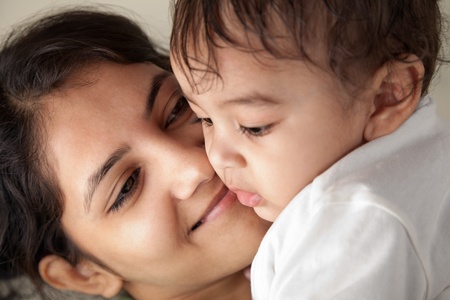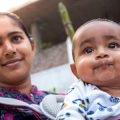Understanding Allergies in Indian Children
Allergies are a growing health concern among children in India, with their prevalence steadily increasing due to urbanisation, changing lifestyles, and environmental factors. Common allergic conditions affecting Indian children include asthma, allergic rhinitis (hay fever), eczema, and food allergies. Regional triggers such as high pollen counts during certain seasons, dust mites in urban areas, and air pollution—especially in major cities like Delhi and Mumbai—play a significant role in the development and exacerbation of these allergies. Additionally, traditional Indian diets and cultural practices can influence the type and frequency of allergies seen in different parts of the country. For example, exposure to spices, cow’s milk, nuts, or lentils at an early age may trigger food allergies in some children. In many Indian families, there may be misconceptions about allergic conditions, sometimes attributing symptoms to seasonal changes or even “hot and cold” foods rather than recognising them as medical concerns. Understanding the unique environmental and cultural landscape is essential for the early identification and effective management of allergies in Indian children.
Common Symptoms and Early Identification
Allergies in Indian children can present with a range of symptoms that may sometimes be mistaken for common illnesses. Recognizing these signs early is crucial for timely management and prevention of complications. Indian parents should be aware of both classic and subtle indicators, especially since environmental factors such as dust, pollen, pollution, and certain foods are common allergy triggers in India.
Key Allergy Symptoms in Indian Children
| Type of Allergy | Common Signs | Early Warning Indicators |
|---|---|---|
| Skin Allergies (e.g., eczema, hives) | Itchy, red rashes; dry or scaly patches, swelling | Persistent scratching, worsening after eating certain foods or exposure to new soaps/oils |
| Respiratory Allergies (e.g., asthma, allergic rhinitis) | Frequent sneezing, runny/stuffy nose, cough, wheezing | Cough at night or after playing outdoors, repeated throat clearing |
| Food Allergies | Nausea, vomiting, stomach pain, swelling of lips/tongue | Mild tingling or itching around mouth soon after eating suspicious foods like peanuts, milk or eggs |
| Eye Allergies (Allergic Conjunctivitis) | Redness, itching, watery eyes | Rubbing eyes frequently after coming indoors from outside or after festivals involving colours/powders |
Guidance for Parents: Spotting Early Warning Signs
- Monitor patterns: Notice if your child’s symptoms occur after specific exposures—like dust during Diwali cleaning or pollen season in North India.
- Check family history: Children with a family history of allergies or asthma are more likely to develop similar problems.
- Keep a symptom diary: Note down when symptoms appear and potential triggers (foods eaten, activities done, environments visited).
- Do not ignore mild symptoms: Frequent itchy skin or runny nose might be the first sign of allergies rather than a simple cold.
- Consult your paediatrician: Early diagnosis helps avoid severe reactions and ensures better management for your child’s health and comfort.
Cultural Reminder for Indian Parents
Please remember that traditional home remedies may relieve mild discomfort but should not replace medical advice—especially if your child shows any signs of difficulty breathing or facial swelling. Prompt identification and action are essential to keep your little one safe and healthy.

3. Major Triggers in the Indian Context
Allergies among Indian children are often triggered by unique environmental and cultural factors present in Indian households. Understanding these major allergens is crucial for parents, caregivers, and healthcare providers to manage symptoms effectively.
Common Food Allergens
Indian cuisine is diverse and rich in ingredients, but some foods are more likely to trigger allergic reactions in children. Dairy products (especially cow’s milk), peanuts, tree nuts (like cashew and almond), eggs, lentils (such as moong dal and urad dal), and certain fruits like mango or jackfruit can be common culprits. It is important for families to be vigilant when introducing new foods, especially during early childhood, and to observe any adverse reactions.
Pollen Specific to Indian Regions
Pollen allergies are highly prevalent due to India’s varied climate and flora. In northern India, pollen from trees such as Prosopis (khejri), Parthenium (congress grass), and Bermuda grass are frequent triggers. In the southern states, coconut pollen and various grasses can lead to seasonal allergies. Parents should be mindful of local pollen seasons and try to limit outdoor activities when pollen counts are high.
Dust and Indoor Allergens
Dust mites are a significant concern in most Indian homes due to humid weather and carpeted or cushioned surfaces. Frequent sweeping, infrequent washing of bed linens, and stuffed toys can harbor dust mites, leading to persistent sneezing, runny nose, or breathing difficulties. Cockroach droppings and mold growth during monsoon months further increase the risk of allergic reactions indoors.
Air Pollution as a Growing Trigger
Urban areas across India face increasing air pollution levels due to traffic, construction dust, burning of crop stubble, and use of firecrackers during festivals like Diwali. These pollutants can irritate the respiratory tract of sensitive children, worsening symptoms of asthma or allergic rhinitis. Simple measures like using masks outdoors or installing air purifiers at home can help reduce exposure.
Cultural Practices Impacting Allergies
Some traditional practices—such as burning incense sticks (agarbatti), using strong-smelling cleaning agents, or application of herbal oils—may also act as irritants for children with sensitive airways or skin. Parents should observe if such items worsen symptoms and consider alternatives if necessary.
By being aware of these prevalent triggers within the Indian context, families can take proactive steps to create safer environments for their children and minimize allergy risks.
4. Prevention Strategies Adapted to Indian Families
Preventing allergies in Indian children requires a blend of medical guidance and practical, culturally sensitive strategies that resonate with local lifestyles. Below are effective tips tailored for Indian households to help minimize allergy risks at home, school, and community gatherings.
Home Environment: Simple Steps for Allergy Prevention
- Keep indoor air clean: Use exhaust fans in kitchens and bathrooms, regularly dust and mop floors, and avoid indoor smoking or burning incense excessively.
- Reduce dust mites: Wash bed linens weekly in hot water, choose cotton over woolen bedding during winters, and sun-dry mattresses when possible.
- Avoid common food allergens: Introduce new foods like peanuts, dairy, or eggs one at a time to infants, and consult your pediatrician if there is a family history of allergies.
Common Triggers and Practical Home Solutions
| Trigger | Practical Solution |
|---|---|
| Pollen (from outdoor plants) | Close windows during high pollen seasons; encourage children to shower after outdoor play. |
| Mosquito coils & agarbattis (incense) | Use electric repellents sparingly; ventilate rooms after using incense. |
| Pet dander | Keep pets out of childrens bedrooms; bathe pets regularly. |
School Strategies: Partnering with Teachers
- Inform teachers about your child’s specific allergies and provide an action plan in case of exposure.
- Encourage healthy tiffin options that are free from known allergens—homemade snacks like poha or idlis can be safe alternatives.
Community Events: Mindful Participation
- If attending weddings or festivals, carry safe snacks for your child and politely inquire about ingredients used in communal meals.
- Be aware of traditional practices such as using henna or herbal powders that may contain allergens—always do a patch test first.
Caring Reminder
Allergies can be managed effectively with early action and open communication. Remember to involve all caregivers—including grandparents and domestic helpers—in understanding your childs allergy prevention plan. Consult your doctor for personalized advice suited to your familys needs and traditions.
5. Management and Treatment Options
Medical Management Approaches
If your child is showing symptoms of allergies, it is crucial to seek guidance from a qualified paediatrician or an allergy specialist. Common medical treatments for allergies in Indian children include antihistamines, nasal sprays, or prescribed inhalers for respiratory allergies. In cases of severe allergic reactions (anaphylaxis), your doctor may recommend emergency medication like epinephrine injectors. Never self-medicate or use over-the-counter medicines without consulting a healthcare provider.
Home-Based Care Strategies
Alongside medical advice, certain home-based care steps can help manage mild allergy symptoms and prevent flare-ups. Ensure your child’s environment is clean and free from common allergens such as dust mites, pollen, pet dander, and mould. Using air purifiers and regularly washing bed linen in hot water can reduce exposure. Encourage frequent hand washing and teach children not to rub their eyes or nose if they feel itchy. For skin allergies, gentle bathing with mild soaps and moisturising with fragrance-free lotions may provide relief.
Indian Dietary Considerations
In India, food allergies are becoming increasingly recognised, especially to ingredients such as peanuts, milk, eggs, wheat, and certain lentils (dal). Always read food labels carefully, particularly for packaged foods. When eating outside or attending family gatherings and festivals where traditional sweets and snacks are served, politely inform hosts about your child’s allergies. Opt for fresh home-cooked meals whenever possible, using known ingredients to avoid accidental exposure.
The Importance of Professional Guidance
While home remedies and dietary adjustments can support allergy management, it is essential to have regular follow-ups with healthcare professionals. They can monitor your child’s progress, adjust medications if necessary, and provide specific advice tailored to your family’s needs. Remember that prompt consultation with a doctor is key to preventing complications and ensuring your child grows up healthy and safe.
6. When to Seek Professional Help
Recognising Severe Allergic Reactions in Indian Children
While many allergies in children can be managed at home, it is vital for parents to identify the warning signs of a severe allergic reaction, known as anaphylaxis. Symptoms may include sudden swelling of the lips, face, or throat, difficulty breathing, persistent vomiting, dizziness, or loss of consciousness. In India, common triggers can be foods like peanuts, dairy products, shellfish, or even traditional medicines and herbal remedies. If your child experiences any of these symptoms after exposure to a suspected allergen, immediate action is necessary.
Emergency Steps for Parents
If you suspect your child is having a severe allergic reaction:
- Stay calm and reassure your child.
- If available, administer an epinephrine auto-injector (such as an EpiPen) immediately. This medication should always be kept handy if your doctor has prescribed it.
- Call 108 (the emergency ambulance number in India) or rush to the nearest hospital’s casualty department.
- Inform the medical staff about the suspected allergen and provide details about any medicines given.
Acting quickly can save lives; never wait to see if symptoms improve on their own during a serious reaction.
Culturally Sensitive Guidance for Consulting Indian Specialists
In Indian families, home remedies or advice from elders are often considered first. However, for allergic reactions—especially severe ones—it is important to consult a qualified pediatrician or allergy specialist rather than relying solely on traditional methods. Do not hesitate to seek professional help even if you feel pressure from relatives or community members to manage the situation at home. Remember that early medical intervention not only ensures your child’s safety but also helps prevent future complications. Building a trusted relationship with your child’s doctor and keeping updated medical records will make consultations more effective.
Prioritising your child’s health and acting promptly during an allergy emergency is crucial. Regularly educate yourself and family members about allergy management tailored to Indian cultural settings, and always keep emergency contact numbers accessible. If you are ever uncertain about your childs symptoms or treatment plan, consulting an Indian healthcare provider is the best course of action.


